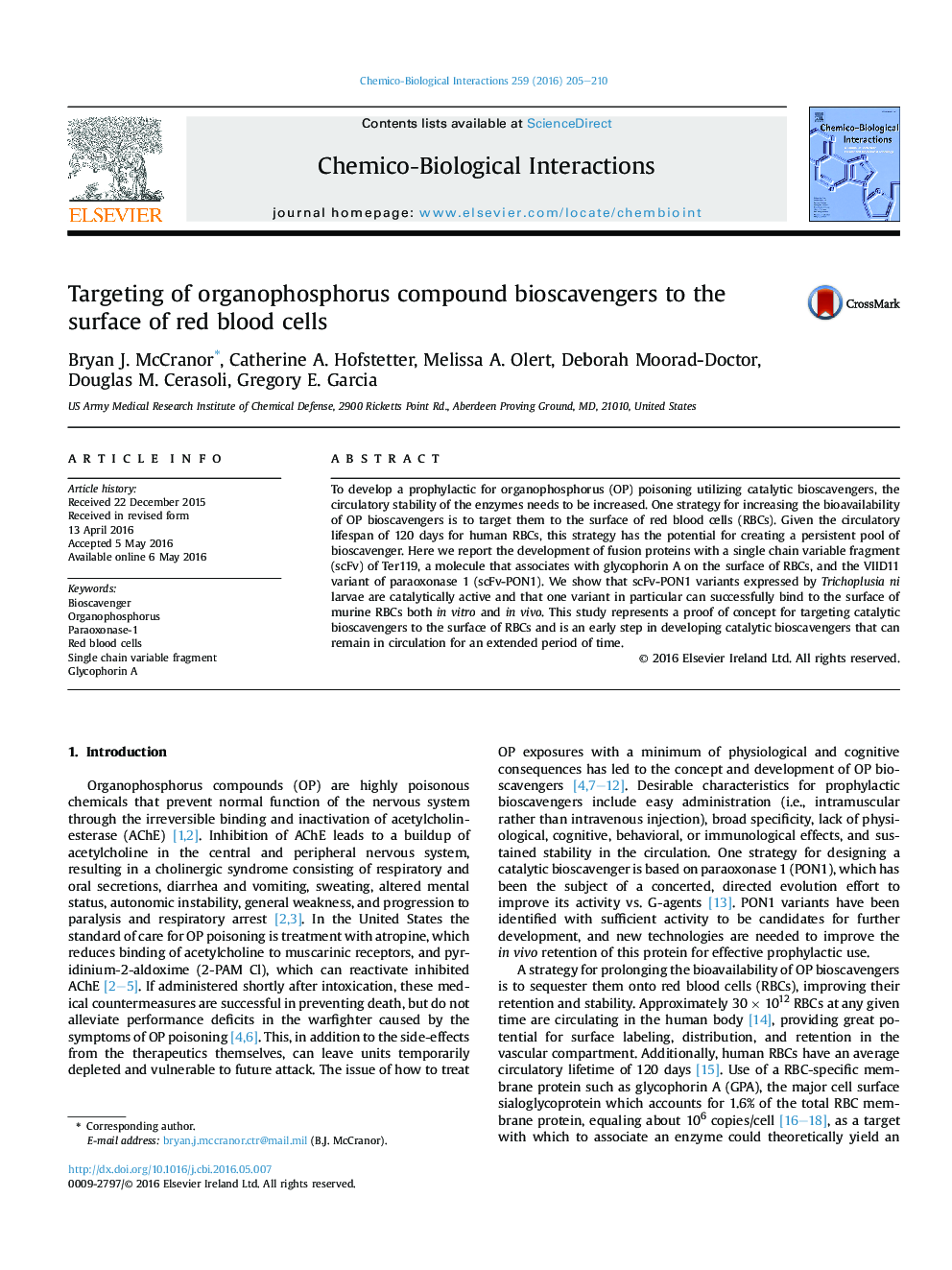| Article ID | Journal | Published Year | Pages | File Type |
|---|---|---|---|---|
| 5559523 | Chemico-Biological Interactions | 2016 | 6 Pages |
•Red blood cell targeting bioscavenger fusion proteins were successfully produced.•One variant was able to bind red blood cells with high efficiency in vitro.•The same variant targeted red blood cells in an in vivo study and was detectable for at least 24 h.
To develop a prophylactic for organophosphorus (OP) poisoning utilizing catalytic bioscavengers, the circulatory stability of the enzymes needs to be increased. One strategy for increasing the bioavailability of OP bioscavengers is to target them to the surface of red blood cells (RBCs). Given the circulatory lifespan of 120 days for human RBCs, this strategy has the potential for creating a persistent pool of bioscavenger. Here we report the development of fusion proteins with a single chain variable fragment (scFv) of Ter119, a molecule that associates with glycophorin A on the surface of RBCs, and the VIID11 variant of paraoxonase 1 (scFv-PON1). We show that scFv-PON1 variants expressed by Trichoplusia ni larvae are catalytically active and that one variant in particular can successfully bind to the surface of murine RBCs both in vitro and in vivo. This study represents a proof of concept for targeting catalytic bioscavengers to the surface of RBCs and is an early step in developing catalytic bioscavengers that can remain in circulation for an extended period of time.
